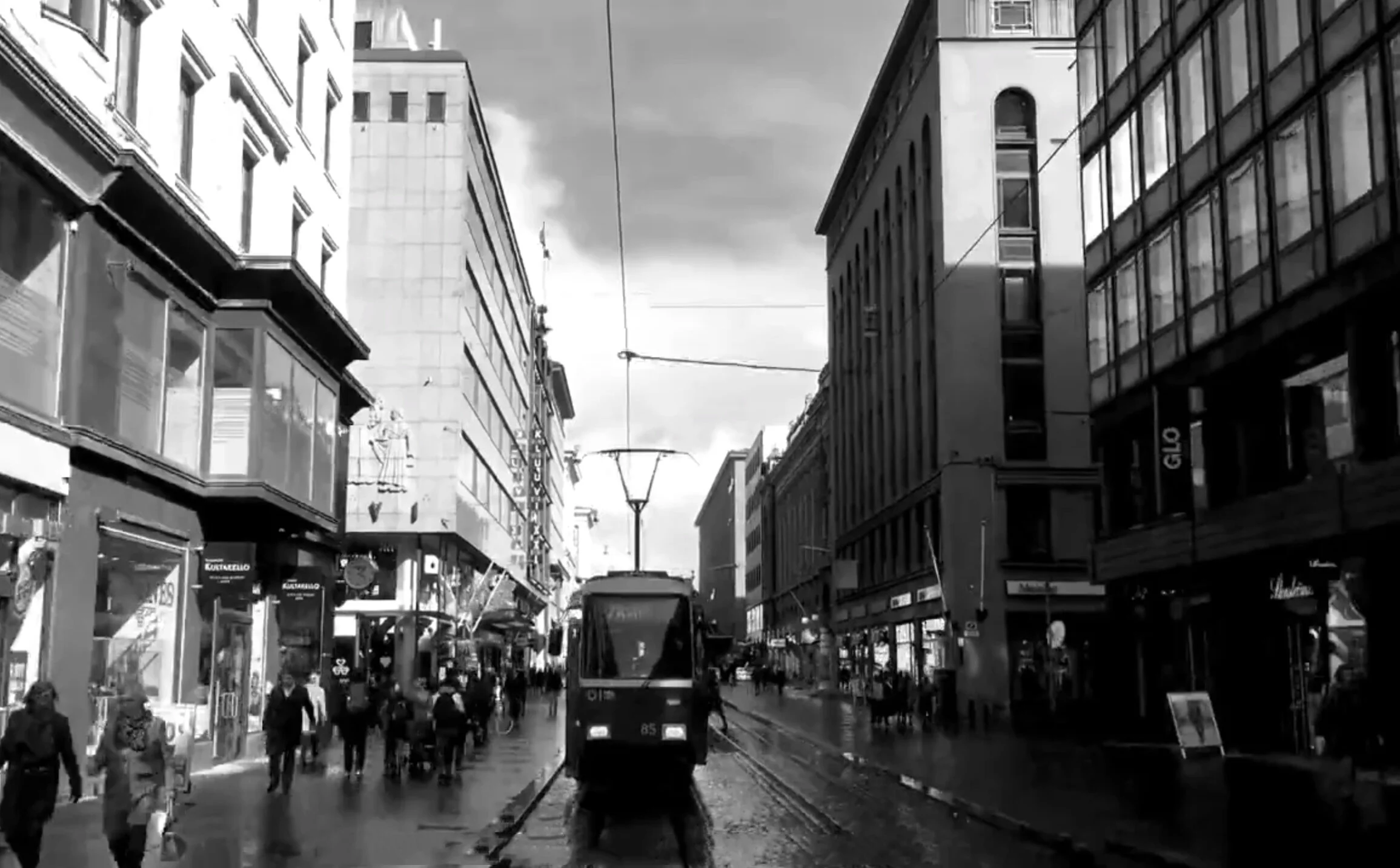
One Man’s Transportation Obsession
Sampo Hietanen wants to redesign how we get from Point A to Point B
/ NOVEMBER 04, 2020
/ FEATURED
Mobility is a $10 trillion annual market, and 76% of that value lies on an asset used 4% of the time—cars. Finnish entrepreneur Sampo Hietanen—and self-described “pain-the-butt”—thinks that is just plain crazy and has set out to change how humans view getting around.
Sampo Hietanen, founder and CEO of the mobility-as-a-service company Whim picks up the video call on the move. He talks as he walks around his Helsinki office, pointing out anything noteworthy. Out the window is Helsinki’s Central Park. “It doesn’t really look like the Central Park in New York,” he says. “It’s more of a forest—I go there to pick mushrooms.”
Transportation is Sampo’s business, his obsession. He can’t help but mention the traffic rolling past below, the buses, scooters, cars, taxis, and bikes. In a perfect world—in Sampo’s world—everyone in Helsinki would use the Whim app to access and take these disconnected modes of transportation for a single monthly fee. It’s Netflix for getting around: many options, one price.
Sampo has dreamed about disrupting and reshaping the world’s transportation markets since his first job as a Finnish transport planner 14 years ago. What is the disruption, exactly? “It will be where the money is: Mobility is about a $10 trillion annual market, and 76% of that value lies on an asset that is used about 4% of the time—cars,” he says.
Sampo is the first to tell you that cars are great: “The freedom of mobility is probably one of the most substantial ideas for man anywhere.” In the next breath, he calls the car an “opponent”—as in, “you have to admire the opponent.” He has nothing personally against cars. It’s how humans use them.
“In Tokyo, over 50% of the millions of cars are used once or twice a month,” he notes. “I was like, Oh, people are so silly. But that's not the thing. It just tells us how much they value the thought of freedom—and not really the car they desire. With Whim, we’re going after the big question: What would I have to do to convince you that I have something more valuable than owning a car? That’s a tough one.”
A Restless Soul Tackles the Illogical
Redesigning the global transportation markets is, indeed, a tough one. But consider what we’ve currently got in our major metros: Daily traffic congestion, parked cars taking up precious street-level space, and exhaust pollution that contributes to global warming. The coronavirus quarantines have unexpectedly opened a window of opportunity for cities—particularly those in Europe—to add more bike lanes, permanently close certain streets to vehicles, and expand public spaces beyond sidewalks. This is a positive direction, but, as Sampo sees it, the issue runs deeper than rethinking traffic routes and rezoning patches of concrete.
“If the world was run by engineers like me, people would be ants and we would move them like we wish,” says Sampo. “But sadly people just don't listen and they do it exactly the wrong way.” Exhibit A: Rush hour. We, as a global society, have entered into a pact to drive ourselves crazy for at least one hour every workday. Then, when we arrive home, we talk about the traffic like we just returned from battle rather than the Long Island Expressway.
And if you think traffic is bad now, just wait for what the future holds. The United Nations estimates that over 50% of the world’s population lives in urban areas; by 2050 that number is expected to increase to nearly 75%.
Certainly, there has to be a better way. Maybe it’s flying cars. Or maybe it’s digging deeper into the tension between individual desires and what’s good for society. As Sampo notes, “In cities these two things clash.”
What does it take for you to give up your car?
Sampo would love to say that being a transportation engineer was a calling, but “I don’t know a single transportation engineer that would’ve heard the calling,” he admits. Sampo chose between history, theater, and engineering. (“I also got into math but that was too theoretical for a restless soul.”)
“Engineering transportation appealed to me because it was hard and the professor had the most scientific approach to the world, or at least that was my perception,” says Sampo. “The problem has always been that I’m not so good at doing things the way it was thought, but more been the pain-in-the-butt that keeps on trying to think otherwise.”
Initially, Sampo thought redesigning urban transportation meant solving a logistics issue. After surveying thousands of people, however, he realized the bigger problem revolved around human fears and habits related to traffic.
During speeches around the world, Sampo started asking audience members what they would have to get in order to give up their cars. About 20% of the audiences agreed to give up their cars in return for unlimited access to their city’s public transport, bike share, scooters, taxis, and car rentals (at the same cost, or less, as car ownership).
About 40% of the audience agreed to give up their cars in return for having access to these same modes of transport throughout their entire country. Only when Sampo floated the idea of having access to transportation everywhere around the globe did 100% of an audience agree to give up their cars.
“The trick of solving urban transportation issues lies on planting a bigger dream into the minds of people,” says Sampo. “What if we could say, for the same amount of money as owning your car, you could have access to all transportation around the world?” That’s Sampo’s goal with Whim.
Sampo Hietanen. Photo: Whim / MaaS Global
Whim is currently in Helsinki, Vienna, and Antwerp with pilot programs in Tokyo and Singapore. It really does function like Netflix. Whim bundles the modes of transportation and then offers riders a variety of monthly plans. Users pick the plan based on needs—bus pass, scooter, city bike, taxi, rental car. In Helsinki, the most established network of any city, the plans cost anywhere from $59 to $499 Euros. You now have all your transport in one app.
The company’s brand naming exercise helped it further understand what they are solving for. After passing on hundreds of names suggested by a branding agency, the Whim team congregated one Friday afternoon. The CTO said that, if no one had a good name by Monday, they’d choose one by throwing a dart at a board full of names. Then everyone started talking about their weekend plans. Someone was going to the beach. Another to their summer house. Another golfing with friends. Just like that, on a whim, said Jonna Pöllänen, global head of business development.
Weekends. Even if someone doesn’t use a car in their city day-to-day, Sampo has found they still want to own one to get out of town. Hence the rental car option. “When people give up their car, they want to make sure that when they need one, they won’t have to fight for it,” says Sampo.
In greater Helsinki, Whim has doubled its user base over the past two years. It now has 150,000 users and 25,000 frequent users out of 1.5 million people. Those ages 31 to 40 and 51-65 are the most active demos. Whim needs a 3% to 5% adoption rate in cities to be profitable. The data tells Sampo that people take four trips per day on average. Whim users take public transportation 15% more than non-users, and 95% of all Whim trips are done via public transportation. “I sell you freedom,” says Sampo. “As long as you're happy, it makes all the sense in the world for me to make you walk, bike, and use public transportation. The business model is designed to drive towards sustainability.” (Sampo typically takes the bus to work.)
Besides the growing number of riders, Whim has some big-time backers. Last fall, Whim received $33 million in funding from bp Ventures (the investment arm of British Petroleum), Mitsubishi, and a Japanese firm creatively named “Nordic Ninja” because they invest in Nordic companies.
Sampo will need all the help he can get to bring mobility-as-a-service to the mainstream. He will need to win over politicians and governments, develop alliances with public and private organizations, and convince everyone they are all partners in this together. Simultaneously, he needs to liberate people from cars.
While all this feels nearly impossible, improving urban mobility is an idea whose time has come. “If the dream is clear for individuals, it makes it easier to convince different parts in the ecosystem,” says Sampo. “For users, mobility-as-a-service is simple: every piece of mobility in a simple subscription — and globally. The disruptions a tech company can do are all done; the ones left take political leadership and that needs vision people can relate to.”
Matt McCue is the co-founder of Creative Factor. He lives in New York City, but is willing to travel long distances for a good meal.



